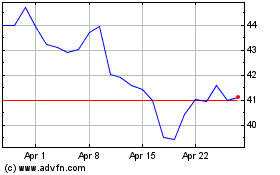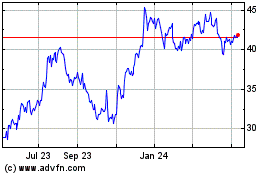12 Bank Failures in '12 - Analyst Blog
March 05 2012 - 9:49AM
Zacks
Last Friday, U.S. regulators shuttered Doraville, Georgia-based
Global Commerce Bank, taking the number of failed banks thus far in
2012 to 12. This follows 92 bank failures in 2011, 157 in 2010, 140
in 2009 and 25 in 2008.
While the financials of a few large banks continue to stabilize
on the back of an economic recovery, the industry is still on shaky
ground. The sector presents a picture similar to that of 2011, with
nagging issues like depressed home prices along with still-high
loan defaults and unemployment levels troubling such
institutions.
The lingering economic uncertainty and its effects also weigh on
many banks. The need to absorb bad loans offered during the credit
explosion has made these banks susceptible to severe problems.
Global Commerce Bank had total assets of about $143.7 million
and total deposits of about $116.8 million as of December 31,
2011.
This failure represents another blow to the deposit insurance
fund (DIF), meant for protecting customer accounts.
The Federal Deposit Insurance Corporation (FDIC) insures
deposits in 7,359 banks and savings associations in the country as
well as promotes their safety and soundness. When a bank fails, the
agency reimburses customer deposits of up to $250,000 per
account.
Though the FDIC has managed to shore up its deposit insurance
fund over the last few quarters, the ongoing bank failures have
kept it under pressure. However, as of December 31, 2011, the fund
was in surplus for the third straight quarter.
Also, the balance increased to $9.2 billion from $7.8 billion at
the end of the prior quarter. The improvement in fund balance was
aided by a moderate pace of bank failures and assessment
revenue.
The failure of Global Commerce Bankis expected to deal a blow of
about $17.9 million to the deposit insurance fund.
Doraville, Georgia-based Metro City Bank has agreed to assume
all the deposits and $79.0 million assets of Global Commerce
Bank.
The number of banks on FDIC’s list of problem institutions saw a
sharp decline for the third straight quarter to 813 in the
October-December period from 844 in the preceding sequential
period. As of the end of 2010, there were 884 banks in the problem
list.
Increasing loan losses on commercial real estate could trigger
many more bank failures in the upcoming years. However, considering
the moderate pace of bank failures, the number in 2012 is not
expected to exceed the 2011 tally. From 2011 through 2015, bank
failures are estimated to cost the FDIC about $19 billion.
With so many bank failures, consolidation has become the
industry trend. For most of the failed banks, the FDIC enters into
a purchase agreement with healthy institutions.
When Washington Mutual collapsed in 2008 (branded as the largest
bank failure in the U.S. history), it was acquired by
JPMorgan Chase & Co. (JPM). The other major
acquirers of failed institutions since 2008 include U.S.
Bancorp (USB) and BB&T Corporation
(BBT).
BB&T CORP (BBT): Free Stock Analysis Report
JPMORGAN CHASE (JPM): Free Stock Analysis Report
US BANCORP (USB): Free Stock Analysis Report
To read this article on Zacks.com click here.
Zacks Investment Research
US Bancorp (NYSE:USB)
Historical Stock Chart
From May 2024 to Jun 2024

US Bancorp (NYSE:USB)
Historical Stock Chart
From Jun 2023 to Jun 2024
